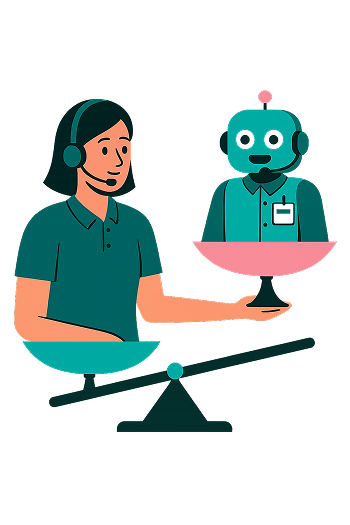Have you ever had a negative interaction with customer service? Do you steer clear of the brand that offers notoriously poor customer service and warn your friends to do the same?
You’re not alone. Support conversations are a great way to retain customers, upsell, cross-sell, and most importantly, create a positive experience they’ll speak about for days. However, a single bad conversation with a customer can end their relationship with your brand. Customers’ standards for customer support have significantly risen in recent times: In Zendesk’s 2022 CX Trends Report, 61% of customers say this past year’s crisis has increased their expectations for customer service. And it’s crucial for businesses to meet and exceed these expectations to stay ahead.
Let’s examine closely what bad conversations are and what the true cost of a bad conversation is — and how you can turn them into opportunities to deliver a great customer experience.
What are bad conversations?
A bad customer service conversation is any negative interaction that a customer has when they’re seeking support. This is an incredibly frustrating experience for the customer and agent alike. Your product might be the best in the market, but if the customer service agent is not helping the user get the best out of it, then it becomes a huge friction point that could turn the relationship between you and your customer sour.
Some examples of bad conversations include:
- Lack of empathy and compassion from a support agent
- No real resolution, just platitudes and empty promises
- Customer is being passed around between multiple agents and teams
- No appeasement strategy to de-escalate a stressful situation
- Untrained agents struggling to drive the conversation
- Customer has to repeat their information multiple times
- Long wait times
The good news is that all of these are avoidable. The bad news, however, is that your current training and CSAT surveys are not enough to solve these issues. And while these problems persist, your business takes a major hit.
The real costs of bad conversations
The real consequences of bad conversations go beyond your CSAT and NPS. They affect your customers’ loyalty, your brand’s reputation, and ultimately, your revenue.
Customer loyalty and retention
Microsoft’s Global State of Customer Service report reveals that 97% of global consumers surveyed say customer service is an important factor in their choice of or loyalty to a brand. In the Zendesk report mentioned above, 81% of customers say a positive customer service experience makes them more likely to make another purchase.
On the flip side, your customers don’t wait for a positive experience to happen. 61% say they would switch to a company’s competitor after just one bad customer service experience. This means that you have to act fast.
Brand reputation
In the age of social media, negative experiences go viral in a heartbeat, but positive experiences rarely get talked about. Unhappy customers also post on social media, leave negative reviews, and rate the product poorly, all of which affect a brand’s reputation.
The bottom line
Poor customer service has a direct impact on a company’s revenue as well. Businesses lose a whopping $75 billion a year due to poor customer service.
Furthermore, when a company does not prioritize empathy in their customer service, customers take notice. This empathy deficit costs the average brand $300 million in lost revenue every year.
How to fix bad conversations
The key to fixing bad conversations is identifying them as they’re happening and converting them into good conversations. Traditional CSAT surveys conducted after customer interactions do not help you solve the problem in real-time. Only 1 in 26 customers tell a business when they had a poor experience; the other 25 just leave.
Customers are also aware when support agents are poorly trained or when customer service is not a priority for a company. In the Zendesk CX Trends report, 54% of customers say it feels like customer service is an afterthought for most businesses they interact with, while 68% say it feels like most businesses need to improve the training of their customer service agents.
The most effective way to check both these boxes is by implementing conversational insights tools into your customer service workflows. The Zendesk report states that high performers in customer service are 6.8 times more likely to have already implemented conversational customer service capabilities.
AI-powered conversational customer service technology helps improve your support in many, very real ways:
- Enables real-time training for agents
- Helps agents communicate empathetically and make smart decisions that convert every conversation into a good conversation
- Saves costs and time in conflict resolution and appeasement
- Helps executive leadership keep a direct eye on customer service metrics and refine their strategy
All these benefits lead to one huge success story: You deliver a positive customer service experience to your customers, leaving them satisfied, happy, and cared for.
Want to learn from industry leaders how to identify bad conversations, take action in real-time, and keep bad conversations from happening in the future? Listen to a virtual panel discussion, featuring Etie Hertz (CEO, Loris AI), Ben Segal (Senior Director of CX, Pair Eyewear), and Jaime Swartz (VP of CX, Eventbrite), on demand: A Good Conversation about Bad Conversations in Customer Care.


